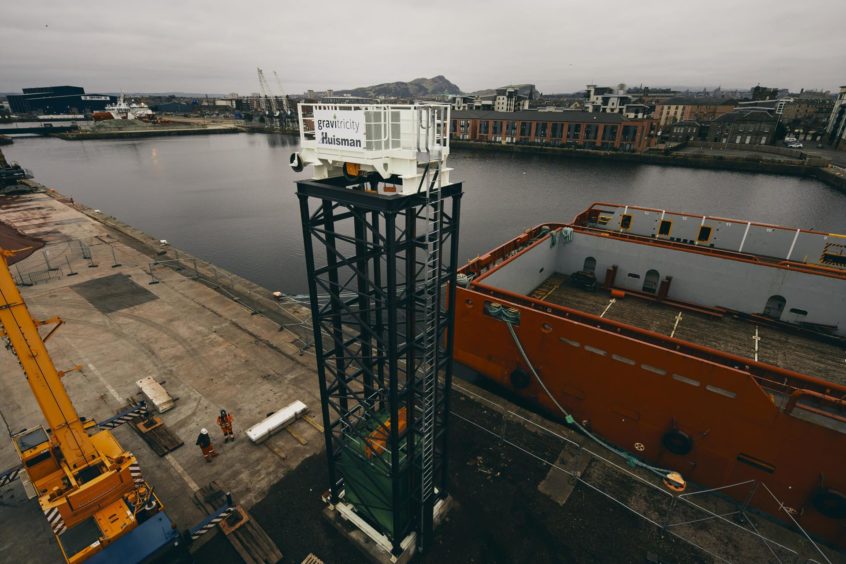
Scottish firm Gravitricity has commissioned a “gravity-powered” 250kW energy storage demonstrator.
The Edinburgh-headquartered business said the technology provided a “cost-effective, long-life alternative” to lithium-ion batteries.
Gravitricity’s demonstrator was built above ground, but future commercial projects will be underground – using either decommissioned mine shafts or purpose-sunk shafts.
The battery works by raising one or more heavy weights in a deep shaft and releasing them when energy is required.
A full-scale 8MW project would store enough electricity to power 5000 homes for an hour.
In a series of tests – carried out at the grid-connected 250kW demonstrator at the Port of Leith in Edinburgh – the company raised and lowered two 25-tonne weights to generate full power and verify the system’s speed of response.
The £1million, 12-metre-high test rig was funded by Innovate UK and delivered in tandem with Glasgow-based controls specialist ISC and industrial partners, Dutch winch manufacturer Huisman.
Gravitricity now plans to roll out the technology in series of full-scale 4-8MW projects in disused mine shafts worldwide.
“These tests confirm our modelling and show that gravity energy storage is a serious contender in the global energy storage market,” says company managing director Charlie Blair.
“We’ve proven we can go from zero to full power in less than a second – which can be extremely valuable in the frequency response and back-up power markets – plus our ability to continuously vary power output dependent on demand. In the coming months we’ll be running tests with the two single weights, dropping one after the other to verify smooth energy output over a longer period.
“A key feature of our full-scale projects will be their long life. Once built, our system can last for over 25 years, with no loss in output or degradation over time. This makes gravity storage cost-effective. And unlike batteries, we have no reliance on rare metals such as cobalt and nickel which are becoming increasingly scarce in the global drive to electrification.”
Recommended for you

